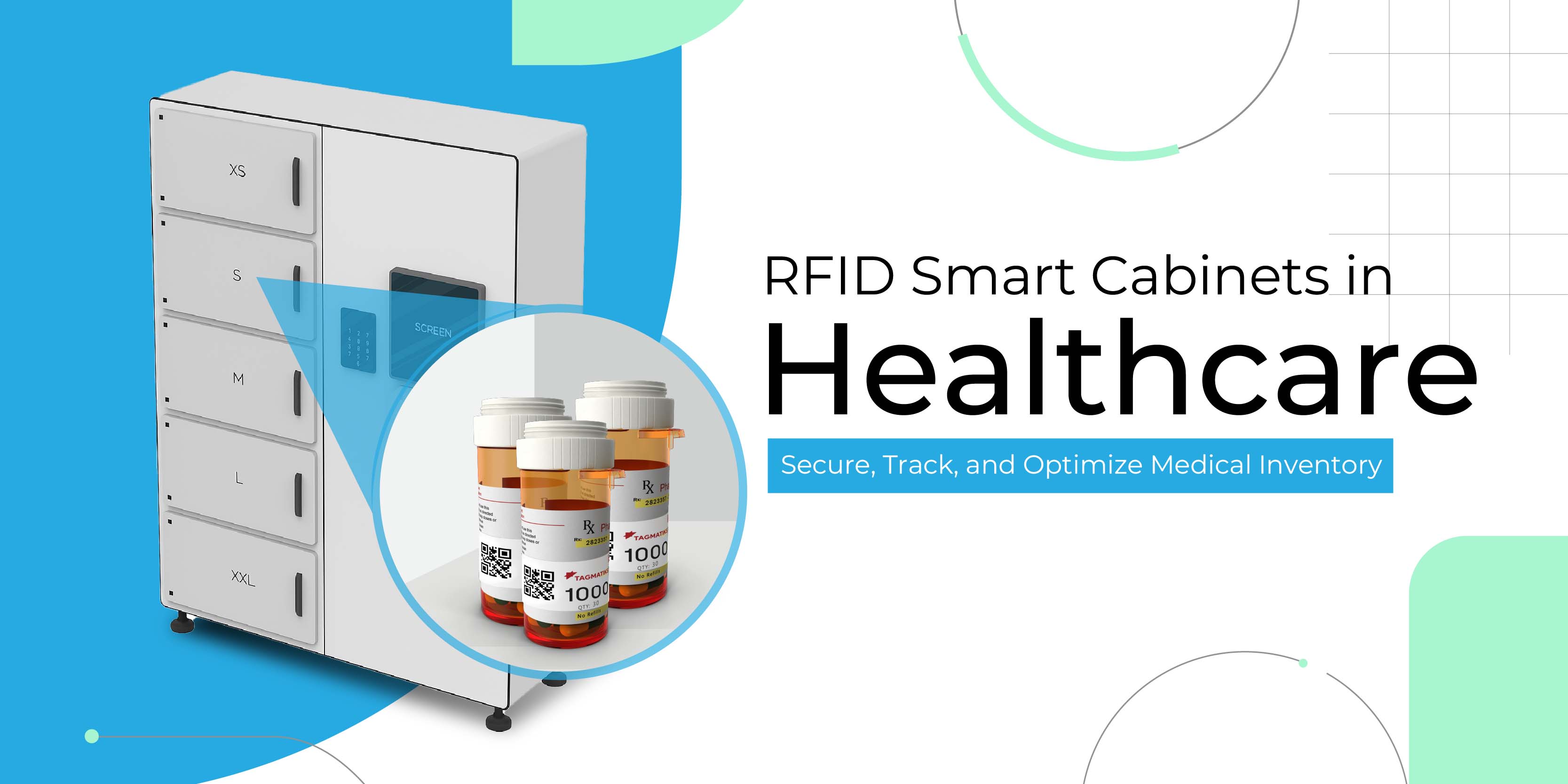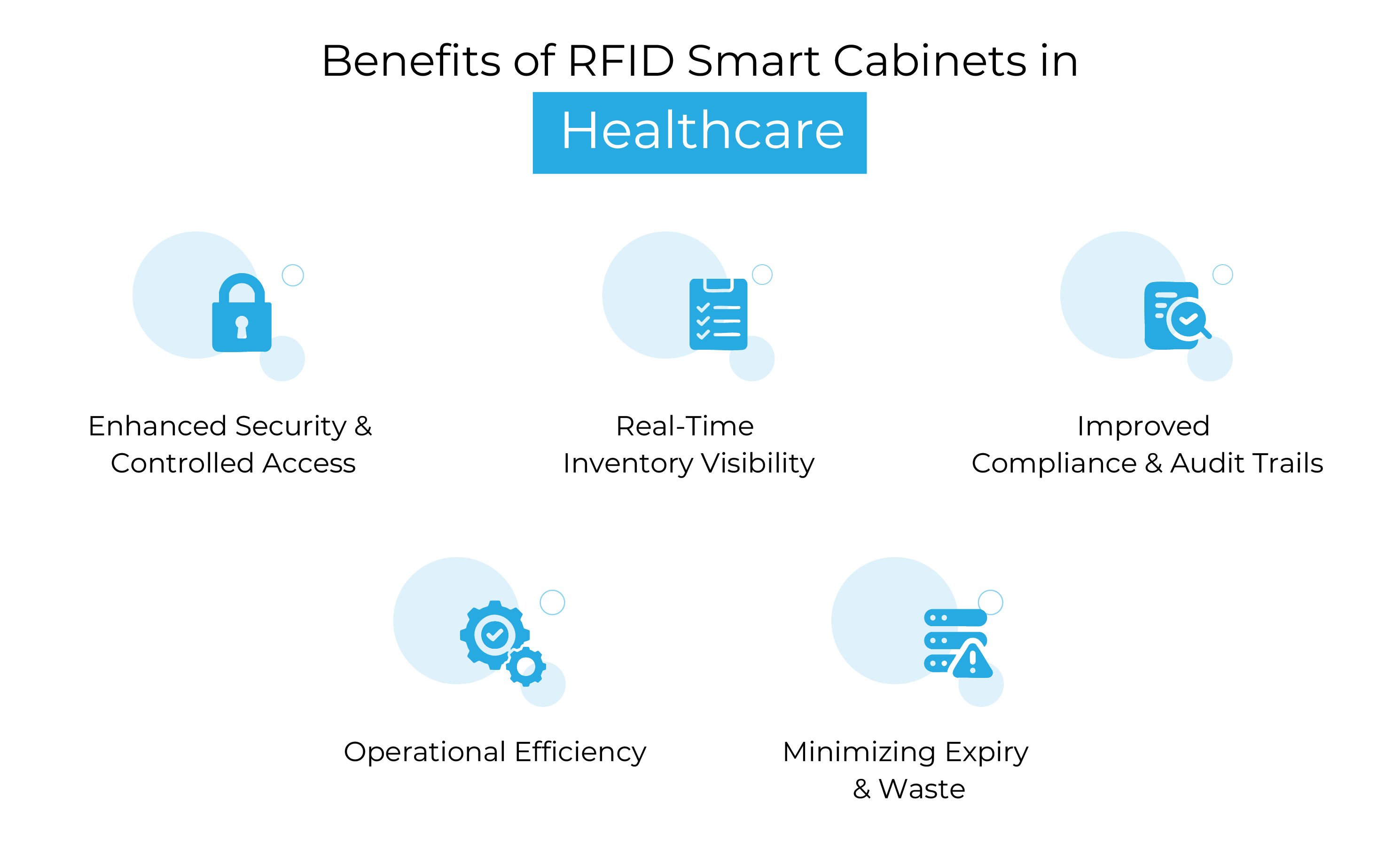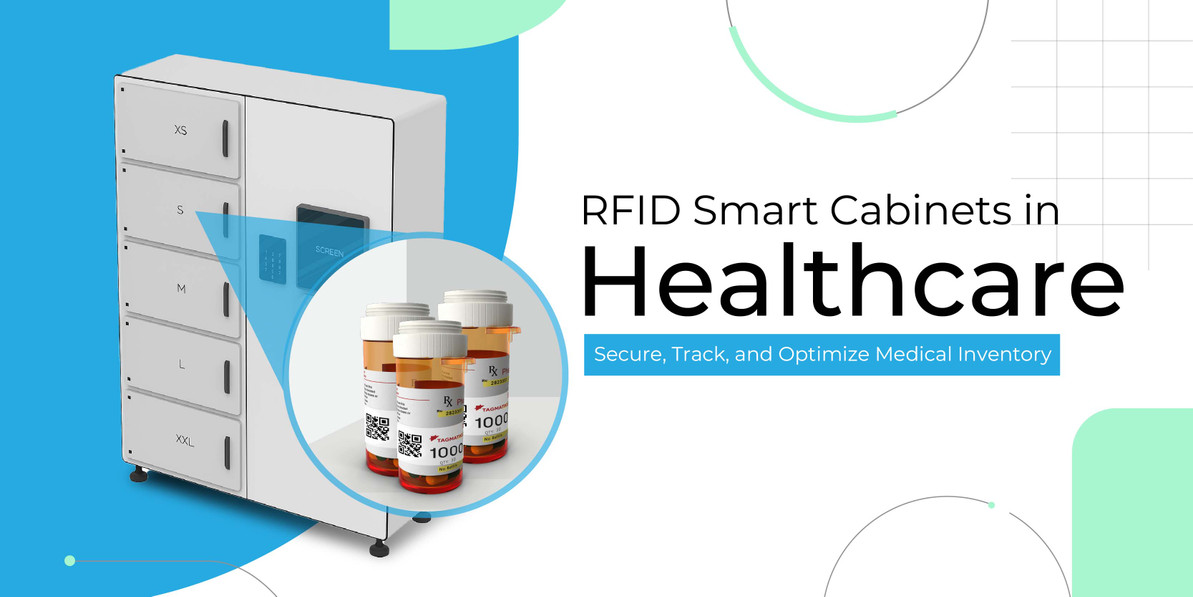RFID Smart Cabinets in Healthcare: Secure, Track, and Optimize Medical Inventory
Hospitals and healthcare facilities face constant challenges in managing medical inventory. From tracking high-value surgical implants to ensuring essential medications are available when needed, efficient inventory management is critical to delivering quality care. Unfortunately, manual tracking methods and unsecured storage can lead to stockouts, expired items, or even lost inventory.

That’s where RFID Smart Cabinets come in, a transformative solution that brings automation, security, and real-time visibility to healthcare inventory systems.
What Are RFID Smart Cabinets?
RFID Smart Cabinets are intelligent storage systems designed to securely manage and track medical inventory using Radio Frequency Identification (RFID) technology. These cabinets are equipped with:
- RFID readers and antennas that detect tagged items within the cabinet
- A secure locking mechanism to control access
- A software interface that provides real-time data to staff and administrators
How Do They Work?
RFID Smart Cabinets work by using built-in RFID readers to automatically detect tagged medical items placed inside. Each item’s movement—whether added or removed—is recorded in real-time, along with user access via authorized logins or badge scans. This system ensures accurate inventory tracking, minimizes manual effort, and enhances security.
Key Benefits of RFID Smart Cabinets in Healthcare

1. Enhanced Security & Controlled Access
Access to the smart cabinet is restricted to authorized users, typically through staff ID badges or biometric logins. This ensures that only qualified personnel can retrieve critical supplies, helping prevent misuse, tampering, or theft—especially important for narcotics and high-value devices.
2. Real-Time Inventory Visibility
As items are placed in or removed from the cabinet, the system updates automatically. This gives staff real-time insights into stock levels and item locations, reducing the risk of unexpected shortages. Alerts can also be set up to notify staff when inventory runs low or when items are nearing expiration.
3. Improved Compliance & Audit Trails
RFID Smart Cabinets maintain a detailed, time-stamped log of every transaction — who accessed the cabinet, what was taken, and when. This digital trail is invaluable for meeting regulatory requirements and simplifies audit processes, helping facilities stay compliant with healthcare standards.
4. Operational Efficiency
By eliminating manual checks and paperwork, RFID Smart Cabinets free up valuable time for clinical staff. Inventory checks that once took hours can now be completed in minutes. This allows nurses and technicians to focus more on patient care rather than supply tracking.
5. Minimizing Expiry & Waste
The system can enforce FIFO (First-In-First-Out) inventory management by tracking item dates and encouraging proper usage order. This reduces the chances of expired items going unnoticed and improves planning for restocking, leading to cost savings and reduced waste.
Common Use Cases of Smart Cabinets in Healthcare Facilities
RFID Smart Cabinets are adaptable and can be used across various departments, such as:

Operating Rooms (ORs): RFID Smart Cabinets help track surgical instruments, implants, and sterile kits in real time. This ensures immediate availability during procedures, reduces delays, and maintains strict control over high-value and mission-critical surgical supplies.
Intensive Care Units (ICUs): In ICUs, smart cabinets manage essential medications, emergency equipment, and daily-use consumables. They provide fast, secure access while maintaining accurate records of inventory usage, supporting critical care teams with reliable and immediate supply availability.
Laboratories: RFID Smart Cabinets secure diagnostic kits, chemicals, and testing reagents, reducing the risk of expired or misplaced materials. They ensure proper inventory rotation and traceability, which is vital for accurate diagnostics and regulatory compliance.
Pharmacies and Mobile Units: These cabinets track and control access to controlled substances, vaccines, and packaged medications in both stationary and mobile pharmacy settings. This helps maintain compliance, reduces diversion risks, and ensures medication availability across healthcare locations.
Integration with Broader RFID Healthcare Ecosystem
RFID Smart Cabinets are most effective when integrated into a broader hospital infrastructure, including:
- ERP (Enterprise Resource Planning) and EHR (Electronic Health Record) systems for synchronized inventory and patient usage data.
- RFID handhelds and fixed readers for inventory tasks beyond the cabinet — such as receiving and cycle counts.
- Data analytics platforms that help forecast demand, analyze usage trends, and improve procurement decisions.
This integration transforms isolated inventory cabinets into part of a smart, connected hospital ecosystem.
Considerations Before Implementation
Before deploying RFID Smart Cabinets, hospitals should evaluate a few critical factors:
Infrastructure & IT Readiness
Before implementing RFID Smart Cabinets, assess your facility’s existing network infrastructure, software compatibility, and RFID tag types. Ensuring seamless integration with current hospital systems is critical for real-time data synchronization and smooth cabinet functionality.
Staff Training & Change Management
Successful adoption depends on proper training for nurses, pharmacists, and other users. Provide hands-on instruction, update workflows, and address resistance to change to ensure the RFID system is used correctly and consistently across departments.
Vendor Selection & Scalability
Select an experienced RFID vendor with a proven track record in healthcare. Look for solutions that offer modular designs and scalability, so the system can expand across departments or multiple facilities as operational needs grow.
Conclusion
RFID Smart Cabinets offer hospitals a reliable, secure, and efficient way to manage critical medical inventory. From enhancing patient safety and reducing waste to ensuring compliance and saving staff time, these cabinets represent a smart investment in operational excellence.
As healthcare facilities move toward more connected, data-driven environments, RFID Smart Cabinets play a key role in that transformation.
Want to learn how RFID Smart Cabinets can improve inventory control in your facility?
Explore our RFID healthcare solutions or contact us for a personalized demo.
Recent Posts
-
How RFID Anti-Theft Tags Revolutionize the Retail Industry
Introduction Retail theft and inventory shrinkage are challenges that every store owner faces. Wheth …Dec 22nd 2025 -
RFID Portals in Manufacturing: Tracking Work-in-Progress Efficiently
Introduction Manufacturing thrives on precision and timing. Every part, component, and subassembly m …Dec 15th 2025 -
RF Shielding Explained: Types, Applications, and Benefits
Introduction RF shielding is essential for protecting devices from electromagnetic interference. Thi …Dec 8th 2025




